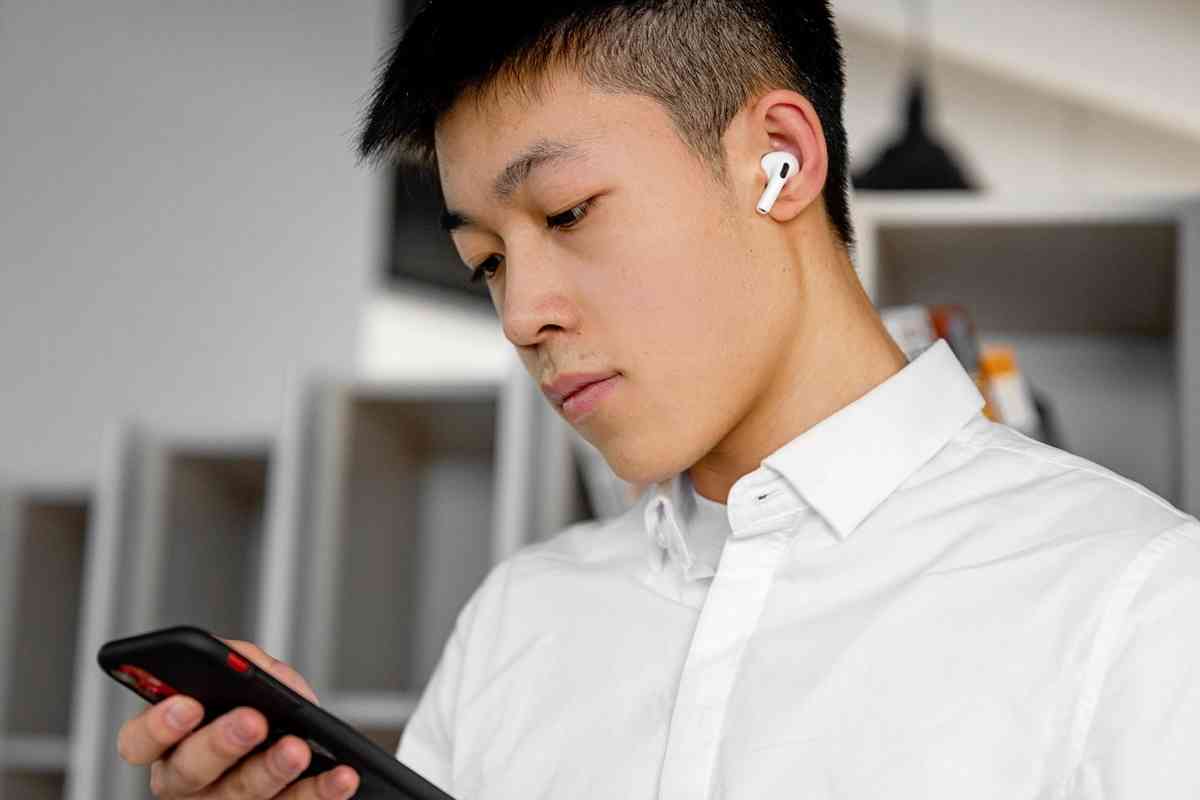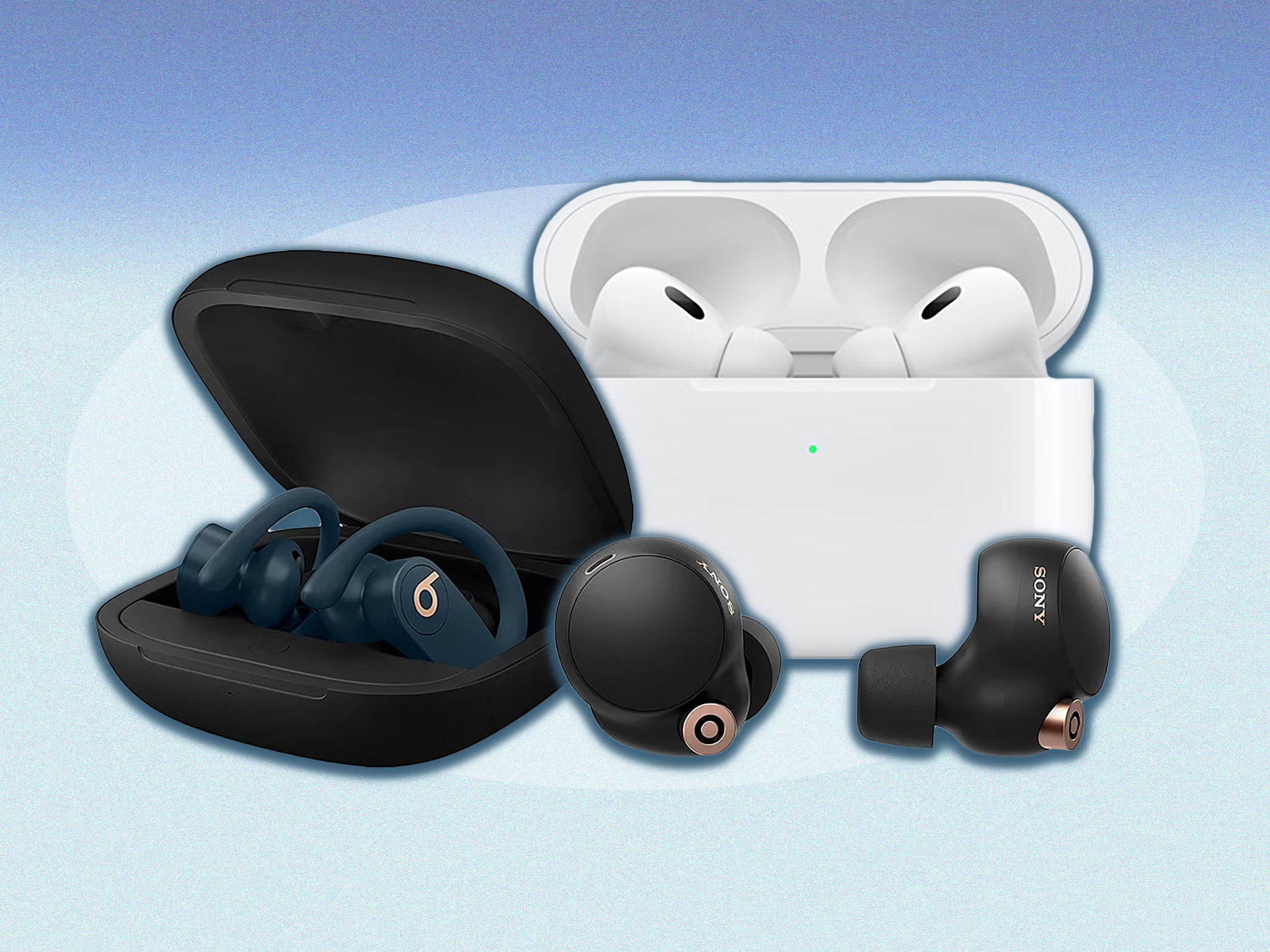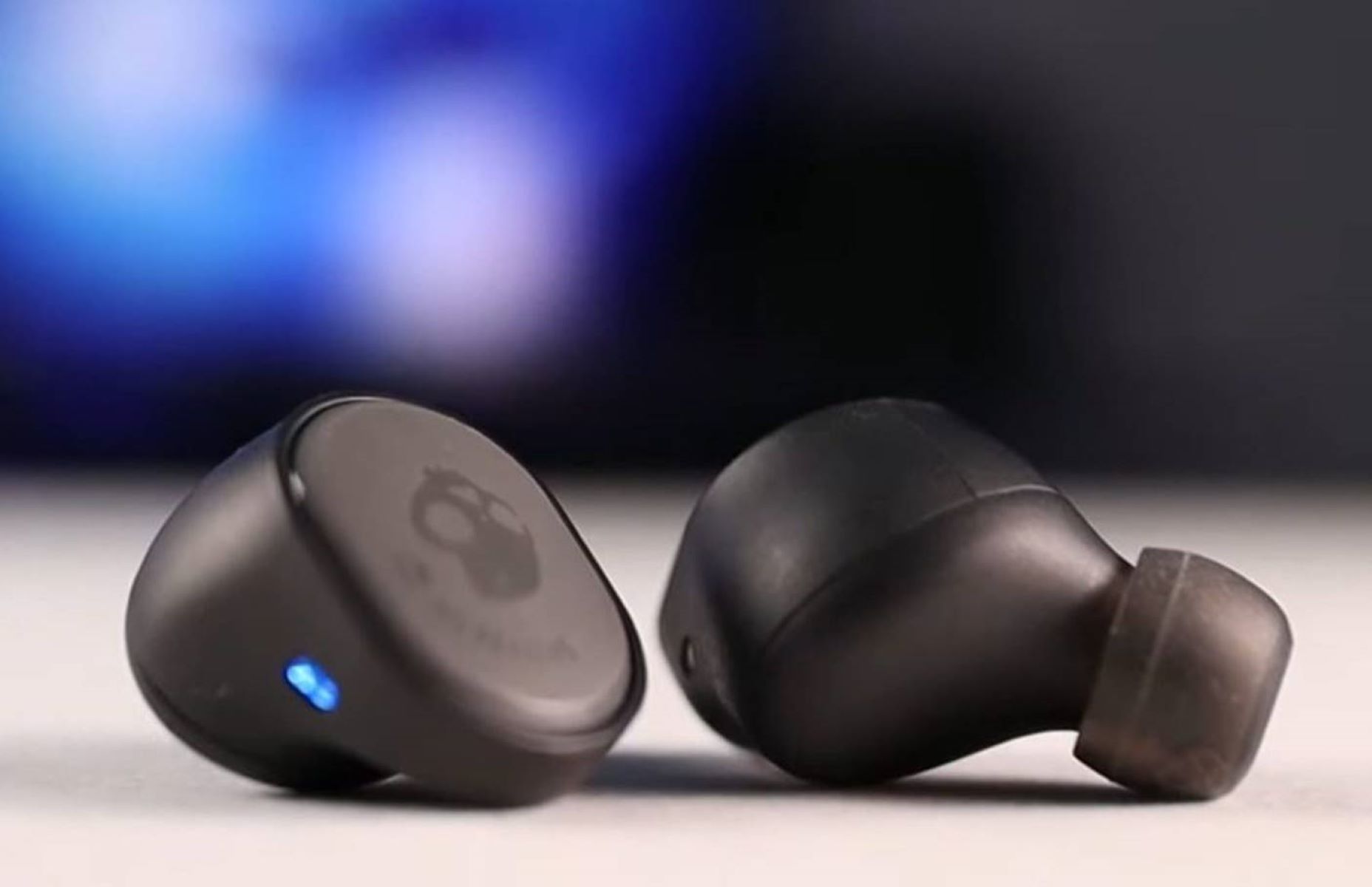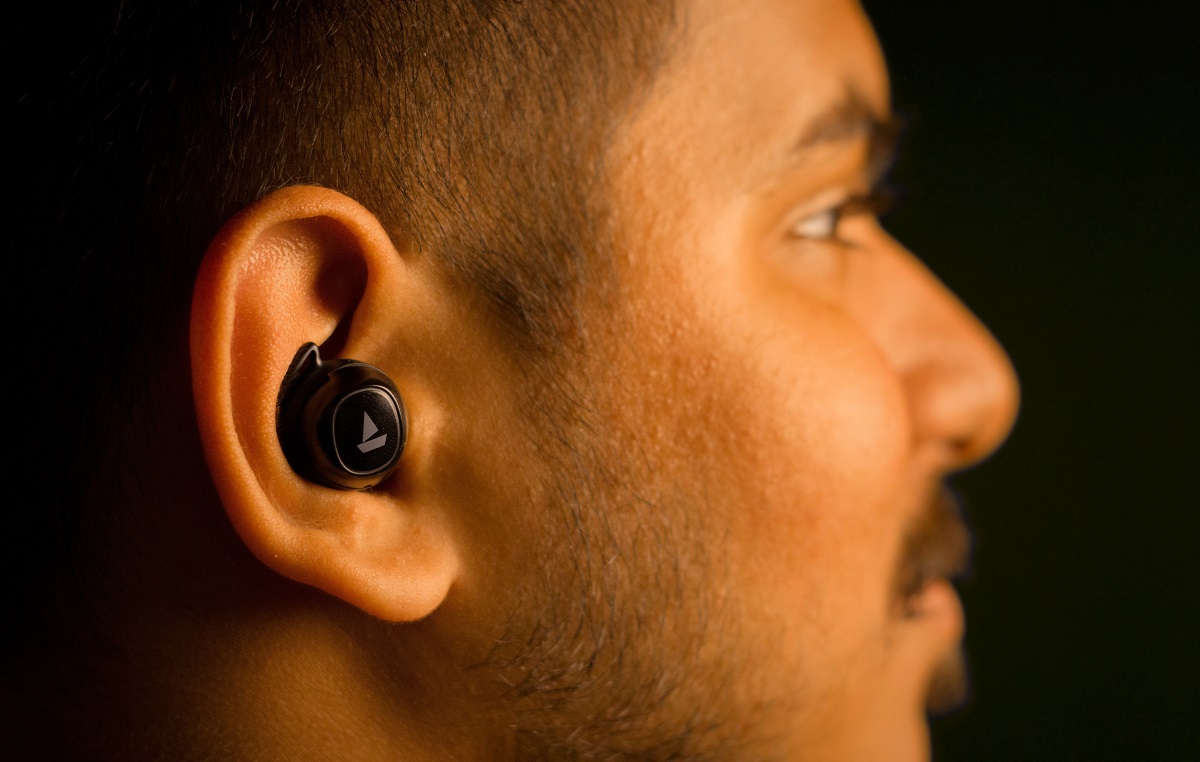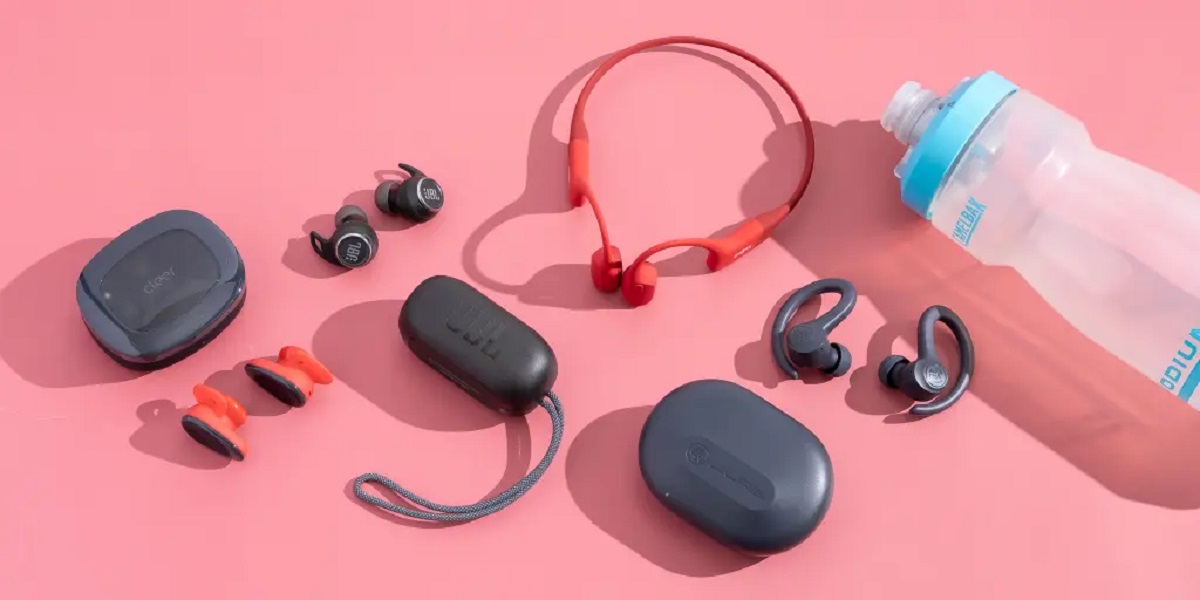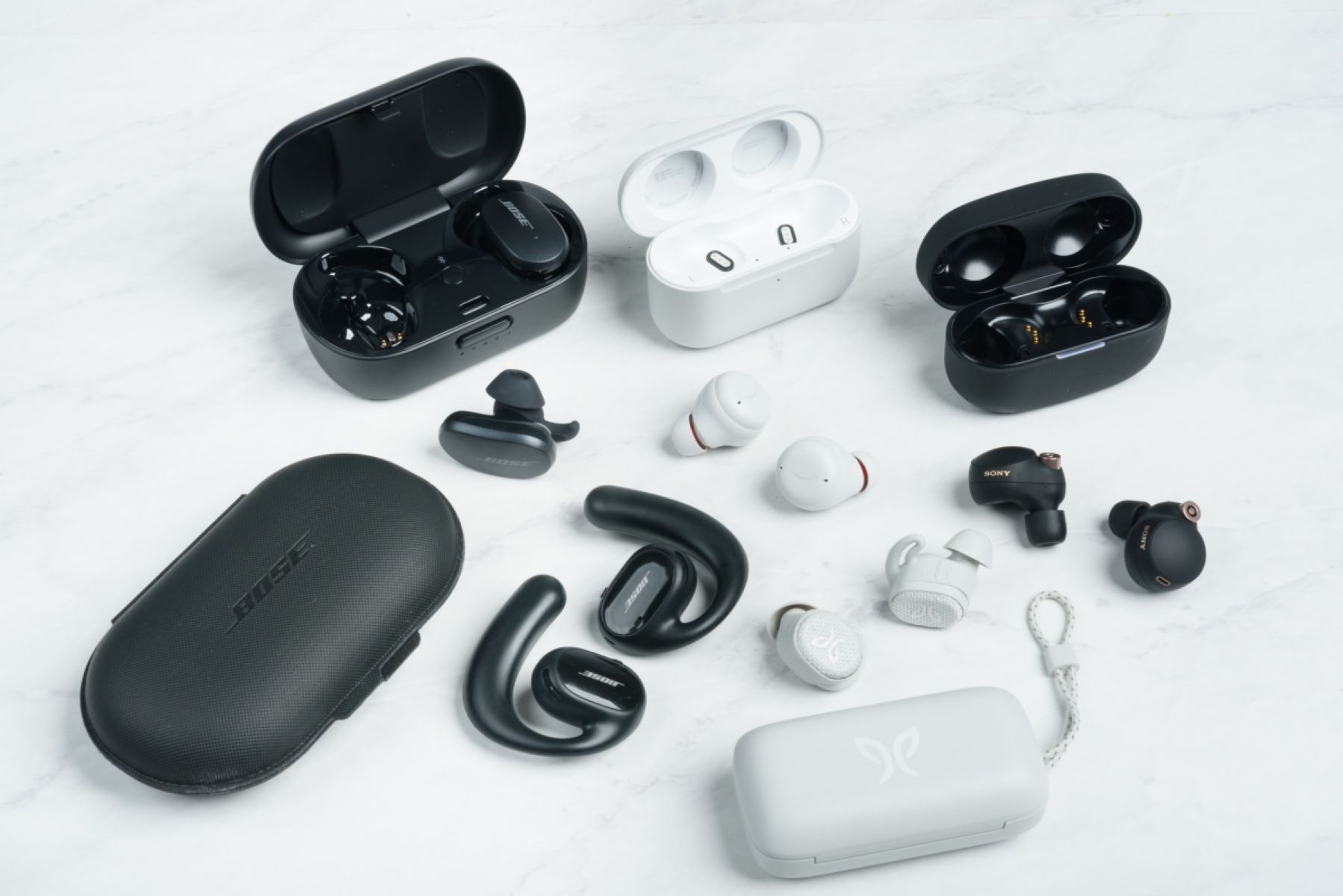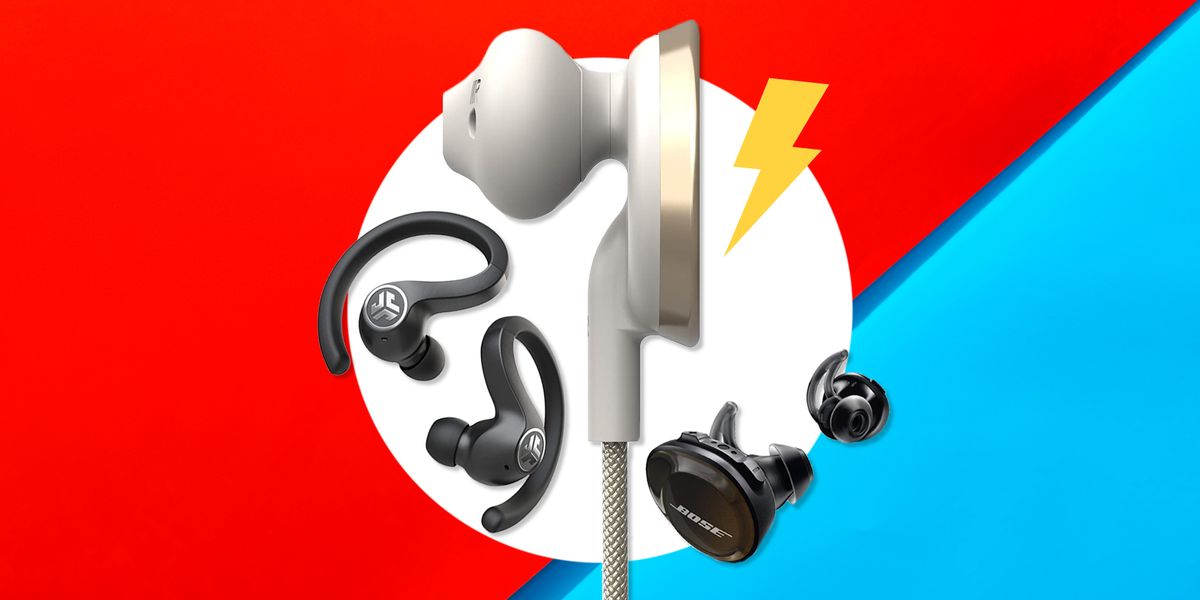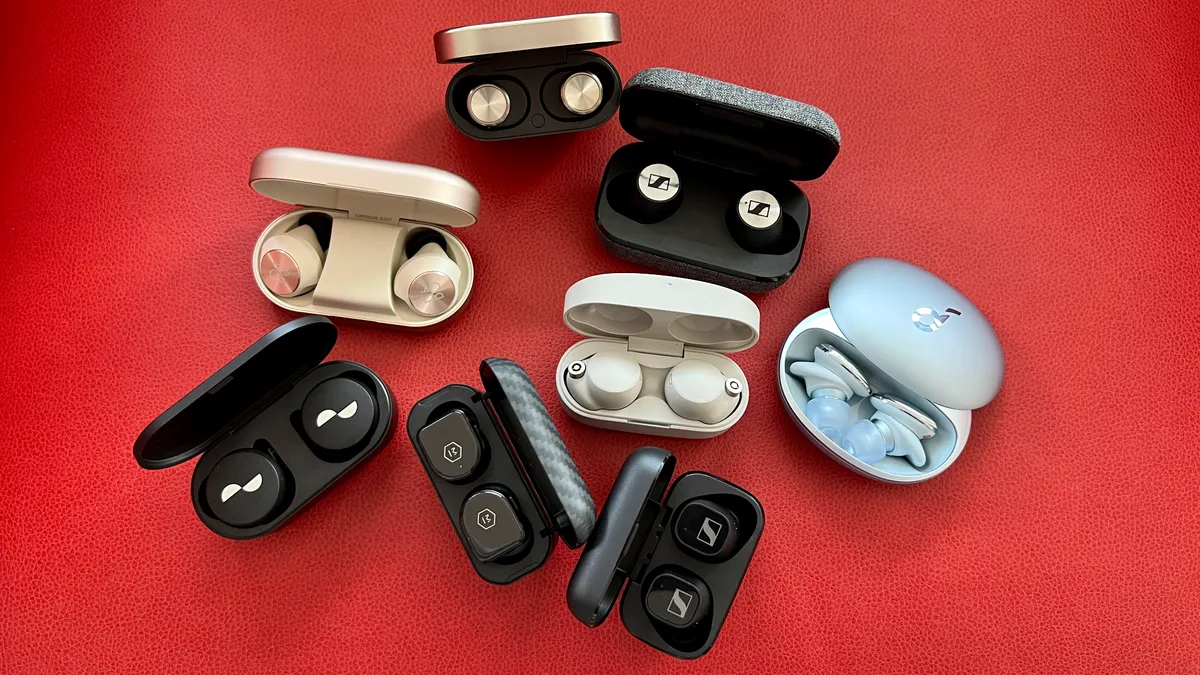Introduction
Wireless earbuds have become a popular choice for those seeking a convenient and tangle-free audio experience. However, one common challenge that many users face is keeping these earbuds securely in their ears. There is nothing more frustrating than enjoying your favorite music or podcast, only to have your wireless earbuds constantly slipping out.
But fear not! In this article, we will explore the reasons why wireless earbuds tend to fall out and provide you with practical tips to ensure a snug and comfortable fit. Whether you’re an avid jogger, a frequent traveler, or simply someone who loves to groove to the beat, these tips will help you keep your wireless earbuds in place.
From choosing the right earbuds to understanding how to properly fit them, we will cover all the essential aspects to ensure a secure and uninterrupted audio experience. Additionally, we’ll delve into using accessories to enhance the fit, maintaining a secure hold during physical activities, and troubleshooting common issues that may arise with wireless earbuds.
So, if you’re tired of constantly readjusting your earbuds or if you’ve been hesitant to try wireless earbuds due to this concern, read on to discover the secrets to making your wireless earbuds stay in your ears. Get ready to enjoy your favorite tunes without any interruptions!
Why Do Wireless Earbuds Fall Out?
One of the main reasons why wireless earbuds tend to fall out is the lack of a secure and proper fit. Unlike traditional wired earphones that have a physical connection to your device, wireless earbuds rely solely on a snug fit to stay in place. When they don’t fit properly, they are more likely to slip out and interrupt your listening experience.
Another factor that contributes to earbuds falling out is the shape and size of your ear. Everyone’s ears are unique, and what fits comfortably for one person may not work for another. Some individuals may have smaller or larger ear canals, which can affect the fit of the earbuds.
The type of physical activity you engage in while wearing your wireless earbuds also plays a role. Activities that involve a lot of movement, such as jogging, running, or intense workouts, can cause the earbuds to become dislodged due to the constant jostling and vibrations.
Additionally, factors such as moisture or sweat can contribute to the earbuds slipping out. Sweat can create a slippery surface around the ear canal, making it more challenging for the earbuds to maintain a firm grip.
Lastly, inadequate earbud design or poor quality materials can also contribute to the issue. Some earbuds may not have ergonomically designed ear tips or lack sufficient grip, leading to a less secure fit and increased likelihood of falling out.
Now that we understand why wireless earbuds tend to fall out, let’s explore some practical tips to help you choose the right earbuds and ensure a proper fit. By implementing these tips, you can enjoy your audio without any worries of constantly readjusting your earbuds.
Tips for Choosing the Right Wireless Earbuds
When it comes to choosing the right wireless earbuds, there are a few factors you should consider to ensure a comfortable and secure fit. Here are some tips to help you make the best choice:
- Earbud Design: Look for earbuds that are specifically designed to fit comfortably in your ears. Consider earbuds with interchangeable ear tips, as they allow you to find the perfect size for your ear canal.
- Ear Tip Material: Opt for ear tips made of soft and flexible material, such as silicone or foam. These materials provide a comfortable fit and help to form a better seal, preventing the earbuds from slipping out.
- Earbud Shape: Pay attention to the shape of the earbuds. Some models have a more compact and ergonomic design that conforms to the natural shape of the ear, offering a more secure fit.
- Secure Attachment: Consider earbuds that come with additional attachments or features to enhance the fit. Some models have ear hooks, wings, or fins that provide extra stability and prevent the earbuds from falling out during physical activities.
- Reviews and Feedback: Take the time to read reviews and gather feedback from other users. This can provide valuable insights into the fit and performance of different earbud models.
- Compatibility: Ensure that the wireless earbuds are compatible with your device. Check if they support the Bluetooth version of your smartphone or audio device to guarantee a seamless connection.
- Battery Life: Consider the battery life of the earbuds, especially if you plan on using them for extended periods. Opt for models with longer battery life to avoid frequent interruptions and the hassle of recharging.
- Budget: Set a budget range that works for you and explore the options within that range. Keep in mind that there are various earbuds available at different price points, so you can find a suitable pair that meets both your budget and requirements.
By considering these tips, you can narrow down your options and find wireless earbuds that are not only comfortable to wear but also provide a secure fit for your lifestyle and activities.
How to Properly Fit Your Wireless Earbuds
Properly fitting your wireless earbuds is crucial to ensure they stay securely in place. Here are some steps to follow for a comfortable and snug fit:
- Clean Your Ears: Before inserting your earbuds, make sure your ears are clean and free from any wax or debris. This will help achieve a better seal and prevent discomfort.
- Select the Right Ear Tips: If your earbuds come with interchangeable ear tips, choose the size that fits your ear canal snugly. It should create a seal without causing any pain or discomfort.
- Insert Gently: Hold the earbud with the ear tip facing forward and gently insert it into your ear canal. Avoid pushing it in forcefully, as this can cause pain and discomfort.
- Twist and Wiggle: Give the earbuds a slight twist and wiggle to help them settle into place. This can ensure a more secure fit and create a better seal, enhancing sound quality.
- Test for Comfort and Seal: Once the earbuds are in place, test for comfort and seal by listening to some audio. They should feel comfortable and secure, with no pressure or pain. If there is a loss of bass or the sound feels muffled, adjust the earbuds slightly until you achieve the optimal seal.
- Adjust as Needed: If you feel any discomfort or notice your earbuds starting to slip out, make small adjustments to find the best fit. Gently readjust the earbuds or try a different size of ear tips to improve the fit and stability.
Remember, finding the right fit may require some trial and error. Don’t be discouraged if it takes a few attempts to get it right. Everyone’s ears are different, and what works for one person may not work for another.
By following these steps and taking the time to properly fit your wireless earbuds, you can enjoy your favorite audio without any interruptions or concerns about them slipping out.
Using Accessories to Secure Your Wireless Earbuds
Sometimes, even with the right fit, wireless earbuds may require additional support to stay securely in place. Luckily, there are various accessories available that can help enhance the stability and comfort of your earbuds. Here are a few accessories you can consider:
- Ear Hooks: Ear hooks are often made of flexible silicone or plastic and can be attached to the body of your earbuds. They provide an extra level of support by hooking over the back of your ear, keeping the earbuds securely in place.
- Ear Wings or Fins: Similar to ear hooks, ear wings or fins also provide additional stability. These attachments typically fit around the outer ridge of your ear, helping to anchor the earbuds in place during activities.
- Earbud Cushions: Some wireless earbuds come with interchangeable cushions that sit in the concha of your ear or rest against your ear’s cartilage. These cushions provide a more secure fit and can enhance comfort.
- Headbands or Headbands: For intense physical activities, consider using a headband or head strap to hold your earbuds in place. These bands wrap around the back of your head, providing additional support to prevent any movement or slippage.
- Neckbands: Neckbands are another accessory option for those who find that traditional wireless earbuds don’t stay in place during activities. These bands sit comfortably around your neck and connect to the earbuds, keeping them securely in position.
Before purchasing accessories, make sure they are compatible with your wireless earbuds model. Some manufacturers offer specific accessories designed to work seamlessly with their earbuds.
Experiment with different accessories to find the one that suits you best. Consider your comfort level and the activities you plan to engage in while wearing the earbuds. Some accessories may work better for intense exercises, while others may be more suitable for everyday use.
Remember to follow the manufacturer’s instructions when attaching and using these accessories. Improper installation or usage may compromise the overall fit and functionality of your earbuds.
By utilizing these accessories, you can enhance the stability and overall fit of your wireless earbuds, keeping them in place throughout your various activities.
Maintaining a Secure Fit During Physical Activity
Physical activity poses a unique challenge when it comes to keeping wireless earbuds in place. The constant movement, sweating, and increased chances of jostling can make it more likely for the earbuds to fall out. However, with a few precautions and adjustments, you can maintain a secure fit during your workouts or other physical activities. Here are some tips:
- Choose the Right Ear Tips: Make sure you have the right size and type of ear tips for your wireless earbuds. Properly fitted ear tips help create a snug and secure seal, reducing the chances of them coming loose during movement.
- Consider Ear Hooks or Wings: Attach ear hooks or wings to your earbuds for added stability. These accessories help anchor the earbuds in place by creating a secure hold to the outer or backside of your ears.
- Wear a Headband or Hat: Wearing a headband or hat can provide extra support and help prevent sweat from reaching your earbuds. It can also help absorb any excess moisture that may cause slipping or discomfort.
- Secure the Cable: If your wireless earbuds have a connecting cable between them, use a cable clip or adjuster to secure it to your clothing. This prevents the cable from bouncing around and potentially pulling the earbuds out of your ears.
- Experiment with Different Positions: Everyone’s ears are unique, so finding the most comfortable position for your earbuds is important. You may need to adjust the angle or depth of insertion to find the position that offers the best fit and stability.
- Take Breaks to Adjust: During extended physical activity, take short breaks if you notice any discomfort or if the earbuds feel loose. Use this time to readjust or reposition them for a more secure fit.
- Use Sweat-Resistant Models: If you engage in intense workouts that involve a lot of sweating, consider investing in wireless earbuds specifically designed to be sweat-resistant. These are often made with materials that can withstand moisture and prevent slippage.
- Stay Mindful of Your Movements: Be mindful of the types of activities you engage in while wearing your wireless earbuds. Sudden or vigorous movements, such as jumping or quick turns, can increase the chances of dislodging the earbuds. Adjust your movements accordingly to minimize any potential issues.
By following these tips, you can maintain a secure and comfortable fit for your wireless earbuds during physical activity. Whether you’re hitting the gym, going for a run, or participating in any other active pursuit, you can enjoy your audio with confidence and without interruptions.
Troubleshooting Common Issues with Wireless Earbuds
While wireless earbuds offer a convenient audio solution, they can sometimes encounter technical issues or performance problems. Here are some common troubleshooting tips to address these issues:
- Charging Problems: If your wireless earbuds are not charging or not holding a charge, make sure the charging cable is securely connected to the charging port. Also, check if the charging case or earbuds have any debris or dust that might be obstructing the charging connection.
- Audio Quality: If you experience poor audio quality, check for any obstructions that may be blocking the signal between the earbuds and your device. Moving closer to your device can sometimes improve the connection and audio performance.
- Intermittent Connection: If you notice that the connection between the earbuds and your device is frequently dropping or cutting out, try resetting the earbuds. Refer to the manufacturer’s instructions for the specific reset procedure. Additionally, ensure that you are within the recommended range for the Bluetooth connection.
- Earbuds Not Pairing: If your earbuds are not pairing with your device, turn off Bluetooth on your device and then turn it back on. Resetting the earbuds and clearing the pairing history on both the earbuds and your device can also help resolve this issue.
- Earbuds Falling Out: If your earbuds frequently fall out, double-check that you have the correct size of ear tips for your ears. Experimenting with different sizes or using ear hooks, wings, or cushions can provide a more secure fit. Additionally, ensure that you’re properly inserting and positioning the earbuds in your ears.
- Limited Range: If you find that the range of your wireless earbuds is limited, ensure that there are no obstacles or interference between the earbuds and your device. Move closer to your device or try using it in a different location to improve the range.
- Volume Control: If you’re unable to adjust the volume of your wireless earbuds, confirm that the volume control buttons on the earbuds are not blocked or damaged. Also, check if the volume level on your device is set to an appropriate level.
- Sudden Shutdown: If your earbuds unexpectedly shut down or turn off, check the battery level to ensure they’re not running out of power. Charging the earbuds fully can prevent sudden shutdowns. If the problem persists, contact the manufacturer’s support for further assistance.
If you encounter any other issues with your wireless earbuds, consult the user manual or visit the manufacturer’s website for troubleshooting guidance. In case the problem persists, reach out to their customer support for further assistance or consider a replacement if the product is still under warranty.
By following these troubleshooting tips, you can resolve common issues and enjoy a seamless audio experience with your wireless earbuds.
Conclusion
Wireless earbuds are an excellent choice for those seeking a convenient and hassle-free audio experience. However, keeping them securely in your ears can be a challenge. By understanding the reasons why wireless earbuds fall out and implementing the tips provided in this article, you can ensure a snug and comfortable fit that allows you to enjoy your favorite music, podcasts, or audio content without interruptions.
Choosing the right wireless earbuds and finding the proper fit are crucial aspects of ensuring a secure hold. Consider factors such as earbud design, ear tip material, and compatibility with your device to find the best fit for your ears. If needed, use accessories like ear hooks, fins, or cushions to enhance stability and comfort.
When fitting your wireless earbuds, remember to clean your ears, select the right ear tips, and gently insert and adjust the earbuds to achieve a secure and comfortable fit. Experiment with different positions and take breaks to readjust if necessary.
During physical activities, pay attention to maintaining a secure fit. Choose the right accessories, such as headbands or ear hooks, to keep the earbuds in place during movement. Stay mindful of your movements and consider sweat-resistant models for intense workouts.
If you encounter any issues with your wireless earbuds, troubleshooting strategies such as checking the charging connection, resetting the earbuds, or adjusting the volume can often resolve the problems. If the issue persists, consult the manufacturer’s support or customer service for further assistance.
Remember, finding the perfect fit may require some trial and error. Every individual’s ears are unique, so it’s important to be patient and explore different options until you find what works best for you.
With the right wireless earbuds and a secure fit, you can enjoy your audio content to the fullest, whether you’re working out, commuting, or simply relaxing. Say goodbye to constantly readjusting your earbuds and hello to an uninterrupted and enjoyable audio experience!







